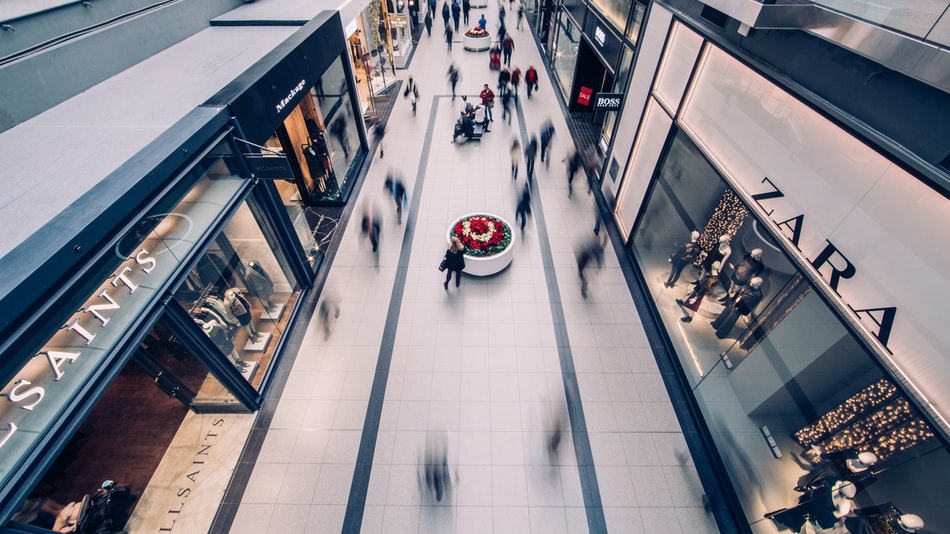The retail industry has been in a constant stage of evolution, especially as technology offers more ways to improve the in-store experience. Store owners may be wondering how to compete with online shopping in this fast-paced climate. Compared to what was available in the retail industry 50 years ago, today’s consumer has their choice of shopping destinations, forcing stores to really focus their efforts to attract and retain customers.
Even consumer product categories like household goods, food, and home decor are popular online, making the spaces more competitive than ever. How many consumers are still shopping in the store? The data is surprising. While the news may be full of retail chain closures, the data for consumers’ shopping reveals that they still like the convenience and in-store experience of brick and mortar.
Data Shows Consumers Aren’t Neglecting Stores
The data is clear and shows in-store retail sales on the upswing. Based on current reports, retail should continue this trend through 2018.
The National Retail Federation (NRF) published the Winter 2017/2018 Quarter Review with a look at how today’s consumers are shopping, and the numbers show brick and mortar retail is still the primary destination for most shoppers. Of the shoppers surveyed, only 21% identified themselves as primarily online shoppers, meaning they bought more than half of their purchases online; the remaining 79% said they bought half or less of the items they needed online.
NRF’s data isn’t an anomaly though, as other consumer spending surveys show the same trend. When PwC Global first surveyed consumers for their Global Consumer Insights Survey in 2010, they found people were making fewer weekly purchases in physical stores, a rate of only 36 percent. The trend continued in 2014 until 2015, when the rate of in-store shopping rose to 40 percent in 2015, and 44 percent in 2018. At the same time, the survey showed purchases by computer dropped from 27% to 20% over the last 6 years.
Breaking down the data spells good news for retailers. It shows that consumers will still want to shop in-store, even when given the option to purchase an item online.
Consumer Viewpoint Shift Toward In-Store Experience
Why are consumers still flocking to stores, especially in this age of omnichannel shopping? The answer appears to be the in-store experience. Not only do consumers prefer the sensory experience of actually touching an item, but they also cite convenience as a reason to visit a store. We’re in an age of instant gratification, and consumers want to be able to purchase an item and get it on the same day.
Consider the other reasons why consumers prefer the in-store experience, as found in Mood Media’s The State of Brick & Mortar:
- 72% of Americans mentioned the ability to touch, feel and try products as a top reason to shop in-store
- 48% listed the ability to browse and discover new things as a top reason to shop brick & mortar
- 26% chose stores over online shopping for the ability to speak to a sales associate
- 1 in 5 global customers in the survey preferred to shop in an enjoyable atmosphere over shopping online
However, the surveys also revealed things that customers didn’t like, and these are touchpoints where stores could look to improve:
- 60% of consumers listed waiting in line as a frustration
- 47% said having an item out of stock
- 43% said stores having an atmosphere that was hectic or too busy
- 33% mentioned having staff members unable to assist them with their purchase needs
How Retail Stores Can Improve the In-Store Experience
How can retail stores attract consumers and boost retail sales overall? First, retailers need to remember to focus on the in-store experience; the goal is to make it a memorable event while providing the items they need.
One example to consider is Target, which despite closing its Target Canada locations, has made significant improvements in its United States footprint. The retailer has expanded its physical presence by opening small-format stores with more on the horizon — stores geared toward delivering what customers need and want by analyzing local demand. In addition to the new stores, Target has also remodeled over 100 locations, adding new lighting, changing displays, and making the store more attractive for consumers to visit.
Shopping is a sensory experience where customers want to touch and see the products they’re buying. Retailers should remember this and make changes to their stores accordingly while even considering a third sense: aural. For instance, 42% of the shoppers surveyed by Mood Media said that they enjoyed when stores played music and 84% of Americans said they felt a store was “more enjoyable” when the retailer played music.
Second, look at the operational level. There’s nothing customers like less than being unable to find what they need. Are sales associates well-trained to answer questions about a particular product? Do they know where certain items are and how to stock them properly? Consumers in search of information or help won’t wait around. They’ll visit another store for their needs, or go online to shop. Is there a way to speed up checkout, especially for consumers who have a smaller purchase?
So how can retailers meet the needs of consumers like those surveyed? It all comes down to this: Know what your customers want, and deliver. The data shows that customers still prefer brick and mortar, and that number is increasing. If your same-store sales are decreasing, take a look at how your operations team handles the in-store experience. Maybe the answer lies in the details you’re overlooking.
Learn how CB4 helps Barnes & Noble use their basic, raw POS data to generate actionable insights for store managers to drive sales.



